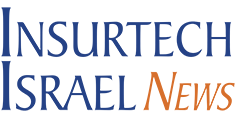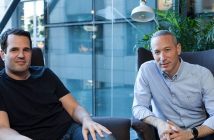Binah.ai owns technology that enables insurers to identify the heart rate, blood oxygenation, breathing rate, HRV and level of mental stress of insurance candidates and clients– via video. The technology may help insurance companies to carry out more accurate and reliable underwriting when commencing insurance, as well as ongoing monitoring of the insured’s state of health over the lifetime of the policy
Real time identification of the insured’s state of general health – this is the message that Binah.ai is bringing to the insurance companies. The company has developed technology that enables it to identify main vital signs on the basis of video of the individual’s upper cheek region of the face. Binah.ai currently has technology enabling it to identify the heart rate, blood oxygenation, breathing rate, HRV (heart rate variability) and level of mental stress of insurance candidates. During the quarter, the company expects to be able to also diagnose blood pressure, and going forward during the year – hemoglobin and body temperature. The company will go on to enabling blood alcohol and sugar levels. The company is proud of the fact that the data enjoys a high level of reliability and medical grade accuracy.
The development of this technology will enable insurance companies to carry out accurate and reliable underwriting when starting insurance. In addition, the technology also enables ongoing monitoring of the insured’s state of health. The Binah.ai technology can be run on any video camera.
Binah.ai CEO David Maman explains that insurance companies currently avoid selling life insurance in developing countries since the cost of the medical tests is not justified by the low insurance coverages which are usually demanded in these countries. Binah.ai’s ability to monitor vital signs enables them to operate in these countries as well – ‘we can enable the insurance companies to monitor the state of health of the insurance candidate whilst he is answering the medical questions by smartphone and approve the insurance whilst the candidate is answering the questions’.
Apart from the advanced underwriting capabilities enabled by Binah.ai for insurance companies, it also creates for them the ability to monitor the insured’s state of health over the course of the insurance period. “If for example an insurance company sees that its insured smokes, it can for example offer a smoking cessation workshop – at its expense. Or if it sees that there is an improvement in the insured’s state of health it can reward him via discounts” – Maman explains.
Binah.ai has recently signed on a collaboration agreement with the Japanese Sompo Himawari Life insurance giant, under which the Japanese company will scan for its customers their level of stress. “We are in discussions with 20 insurance companies around the world for introducing our capabilities into their apps” – says Maman, but explains that the real change will come when the reinsurance companies start demanding that insurance companies start using this technology. He says that they are in contact with four reinsurers, amongst them one of the three biggest reinsurers in the world.
Maman is a serial entrepreneur, and Binah.ai is the 13th company started by him. Four of them were bought, the latest one by Huawei. His partners in the current venture are Konstantin Gedlin – a doctor in physics and mathematics – with 30 years of experience in world of signal processing and mathematics and Michael Markzon, with 15 years of experience in signals processing and mathematical modeling.
The world of insurance is not the only one which Binah.ai has its sights trained on. Alongside the insurance sector, the company is aiming its activity at the medical service providers sector, mainly by telephone, with the aim of allowing the treating physician to diagnose the patient during the conversation. Another area, says Maman – is employers – “There is great value from the employer’s point of view in knowing the state of health of his employees”.



